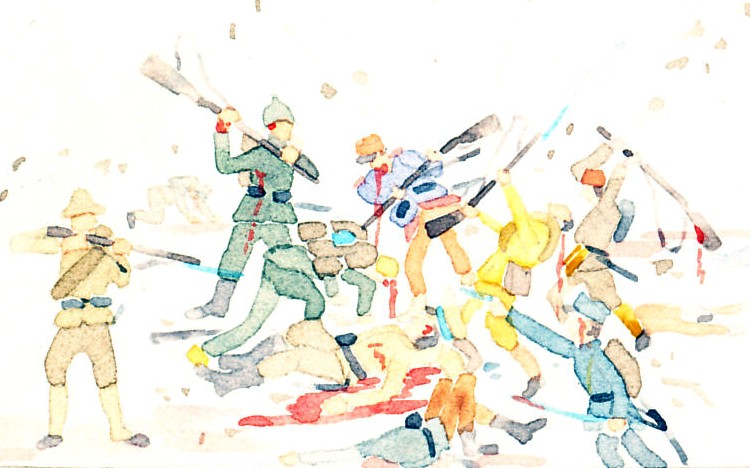A Liebig advertising card of the Bulgarian Army from the series Armées des États Balcaniques, published in 1910.
The card shows, from left to right, a general, a soldier in summer dress, an aide-de-camp, a staff officer, a horse guard, a detachment of cavalry, and a regular infantry company.

Armées des États Balcaniques. Bulgarie.
Véritable Extrait de Viande Liebig.
Voir L’Explication au verso.
Armies of the Balkan states. Bulgaria.
Real Liebig Meat Extract.
See the explanation on the back.
Reverse:
Le service militaire general est introduit depuis 1889 dans la principanté de Bulgarie, récemment érigée en royaume. Les musulmans seuls peuvent s’en faire exempter moyennant une taxe determine. L’armée se compose, en temps de paix, de 23,000 fantassins commandés par 1400 officiers, de 3700 cavaliers avec 160 officiers, de 6250 artilleurs et soldats du train des equipages avec 315 officiers, et de 1900 soldats du genie avec 90 officiers. En cas de guerre, la Bulgarie peut mettre sur pied une armée active de 127,000 hommes, une reserve de 80,000 et une armée territorial de 48 bataillons à 600 hommes, soit en tout plus de 240,000 hommes.
Armies of the Balkan States
Bulgaria. - General Military service was introduced since 1889 in the principality of Bulgaria, recently elevated to a kingdom. Only Muslims can only purchase exemption for a set fee. The army is composed, in peacetime, of 23,000 infantry commanded by 1,400 officers, with 160 officers for 3,700 cavalry, 6,250 soldiers gunners and artillery support, commanded by 315 officers, and 1,900 engineer with 90 officers. In case of war, Bulgaria can field a standing army of 127,000 men, a reserve of 80,000 and a Territorial Army of 48 battalions of 600 men, a total of more than 240,000 men.
Other views:
Larger, Back
